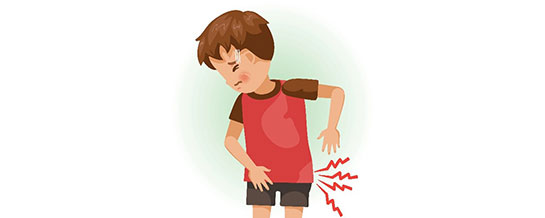How to Care for Your Child with Transient Synovitis
This leaflet will provide you with information about a transient synovitis causes, diagnosis, treatment and home care advice.

What is Transient Synovitis?
It is inflammation of the lining of the hip joint. They sometime call it “irritable hip”. It affects children between 2-8 years old. Boys are more commonly affected than girls
What are the causes of Transient Synovitis?
- While the exact cause is unknown, Usually, it happens after a viral infection
- It is thought to happen because the immune system is trying to fight the infection.
What are the symptoms of Transient Synovitis?
Your child might have the following symptoms:
- Pain over the hip joint, this is usually sudden and affects one side
- Limping or walking on the tip of his toes
- Referred pain over his/her knee or thigh. This means when you have an injury in one area of your body but feel pain somewhere else.
- He /she might may refuse to use the affected leg (refuse to walk or cry while walking)
- There may be a recent history of viral infection
- Your child might have low grade fever
How Transient Synovitis is diagnosed?
- After examining your child, your doctor might request some tests such as;
- ultrasound of the hip joint
- blood test
- The aim of these tests is to exclude more serious conditions
How Transient Synovitis is treated?
- Transient synovitis is a self-limiting condition and normally resolve and settle with time with no consequencies.
- If your doctor advises to give medicine, you can give
- Paracetamol (any brand) or Ibuprofen (any brand)
- Follow the instruction on the medicine package for the correct dose for your child
- Do not give your child Aspirin as this can cause serious complications
- Symptoms should start to improve within 3-5 days with full recovery within 10 days
Home care advise:
- Ensure you child get an adequate rest
- Use of medicines as advised
- Gradual return to regular activity and avoid sports till full recovery
Go to the Emergency Department if:
- the pain lasts for more than 10 days
- the pain is not responding to pain medicines
- there is joint redness or swelling
- your child developed high fever

